Working Memory and AAC
Author: Marion Stanton
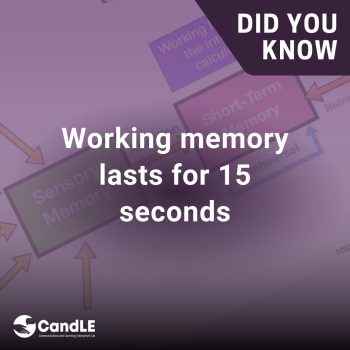
Working memory is the facility we all use to manipulate information to arrive at an answer. An example would be a two-stage mental arithmetic sum such as 10-5+2=7. The student needs to take 5 from 10 but they also need to hold +2 in their working memory to retrieve and answer. Working memory only lasts approximately 15 seconds for any of us, so it is crucial that a student is only expected to have a maximum of 15 seconds thinking time for each question or part of a question they are working on unless they have a way of referring quickly to the information they need or rehearsing the information.
Long-term memory is where we store what we remember without having to think. An example of this is committing the times tables to memory. However, to achieve this a non-disabled student will, for 10×10 multiplication table spend anywhere between 20 hours and 200 hours, spread out over the course of 1 to 5 years of regular “drilling”, which should really be a combination of instant recall, finding shortcuts, and speed training . It is highly likely that this would be a significant challenge for a student who relies on AAC so it could be argued that having a multiplication table to consult or a calculator is a reasonable adjustment for students who rely on AAC.
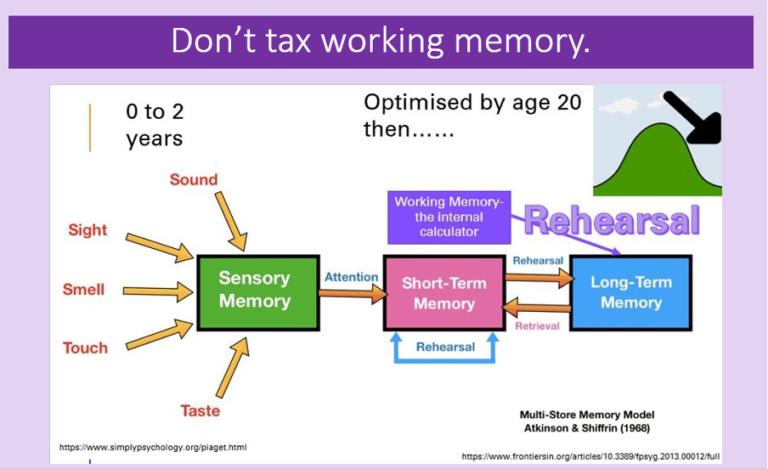
Working memory is compromised by the need to use AAC as it is a much slower process than speech or free writing. It is therefore essential that students who rely on AAC are given ways of working that mitigate against this as much as possible.
Pre-requisites to learning:
It is important that students who rely on AAC have access to textbooks, teacher’s PowerPoints, worksheets, and any other materials that their peers have access to. They need independent means to engage with learning materials so that their learning can develop through repetition with variety, reminders, and practice. Finally, they need a means to record their answers.
This is best achieved using an on-screen keyboard with word-prediction making the learning of literacy essential. However, symbol-based vocabularies and/or answers from multiple choice options may also be appropriate. Multiple choice particularly enables the student to keep up with the pace of the classroom.
The aim is to for the student to achieve maximum independence in the most time effective manner exerting the least physical effort. Once a student’s access is optimised, we can be surprised by how much they can achieve. They key to supporting students who rely on AAC is to ensure that their working memory is optimised.
Examples of adapted work that supports working memory:
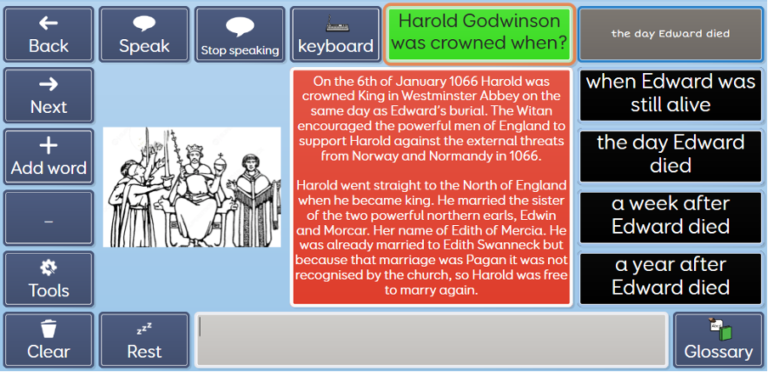
This has multiple choice to support speed and the question, text and answer choices are all on the same page for easy reference.
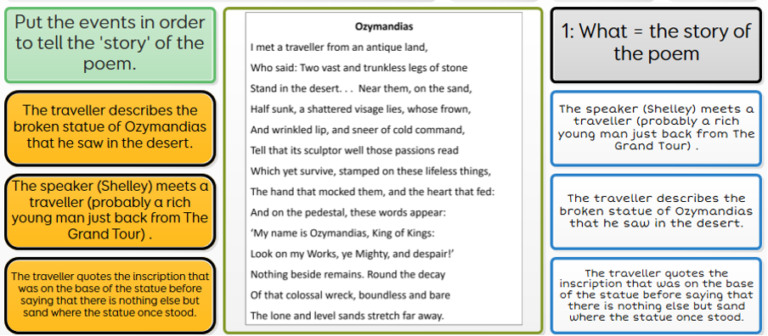
Here is an example of an ordering exercise with the original text on the same page for easy reference.
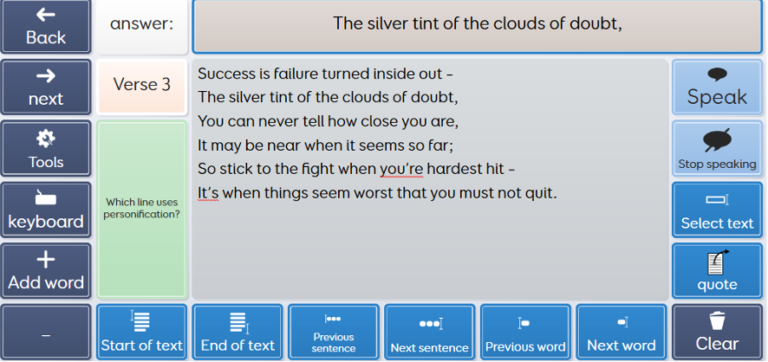
In this example the student can navigate through the text to isolate their quote without leaving the page.
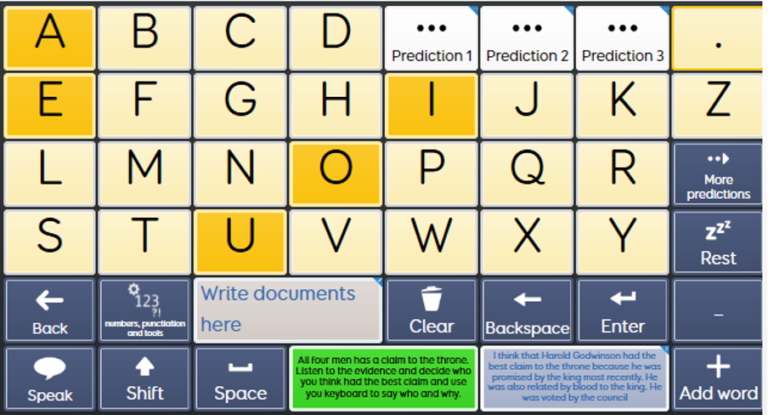
In this example the student’s keyboard has been duplicated so that the question remains in sight as he is typing.
‘Use visual and verbal information to present information to students – This has nothing to do with the infamous ‘learning styles’, rather empirical research suggests that our working memory has two points of entry (Chandler and Sweller, 1992). One accepts auditory information, whilst the other visual. If the auditory and visual information correspond to one another, then the burden on working memory is far less than using one pathway alone. Image 1 shows the effect of using one pathway to working memory, whereas image 2 shows the use of both. However, please note that if the text and visual information are not clearly integrated, then it could have adverse effects on learning (Chandler and Sweller, 1992).’
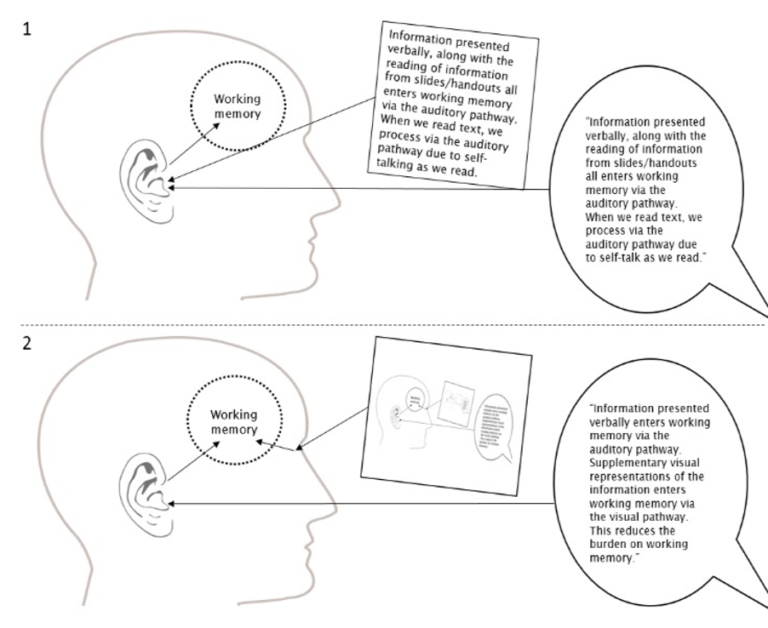
The adaptations shown previously all provide both auditory and visual information in an integrated way.
The harder the better.
The information that a student finds too easy to understand can fail to be sent to long-term memory because it is glossed over by the brain. What we think hard about is what we remember.
We therefore need to be careful about how we repeat what we teach so we don’t encourage shallow learning.
For example, for GCSE revision classes, rather than asking students to reread texts, have them work hard at focusing their attention on the essential meanings of the text. Rereading feels familiar and easy, and won’t prove memorable – after all, they have read it already.
Rather than teaching in topics or blocks, which feels fluent and natural – but is too easy and too fluent – interleave content. Incorporating gaps into the study of a topic, studying different elements of it at different times and revisiting it in the middle of learning something completely different, forces the brain to do a harder job remembering.
This difficulty is what actually makes the knowledge stick.
It’s slower to learn this way, for sure, but it lasts longer. Students may not make what Ofsted calls “rapid progress”, but they will remember what they’re studying better by undertaking more difficult and slower, deeper learning.
An understanding of memory is not an isolated part of education but something that should underpin all learning, informing what we do and why we do it.’
https://www.ldatschool.ca/introduction-working-memory/
Spaced Learning
Cramming facts into learning doesn’t work and neither does associative learning. We need to space practice over time so that learning is repeated just as the association is fading from memory. For example, teach the same concept at intervals of 5 seconds then 25 seconds, 2 minutes, 10 minutes, 1 hour, 1 day, 5 days, 25 days, 4 months etc. This is known as spaced learning and based on the neuroscience of how humans form long-term memory. Permanent neural connections are more likely to be made when a brain cell is stimulated at intervals rather than when it is constantly stimulated.
Lessons are more effective with the following pattern:
• 20 minutes of learning
• physical activity
• applying learning
Marion Stanton – PGCE, AAC accredited (Level 7), MA (online and distance education),
Adv. Dip. Ed. (Special), MCCT
Head of Education
